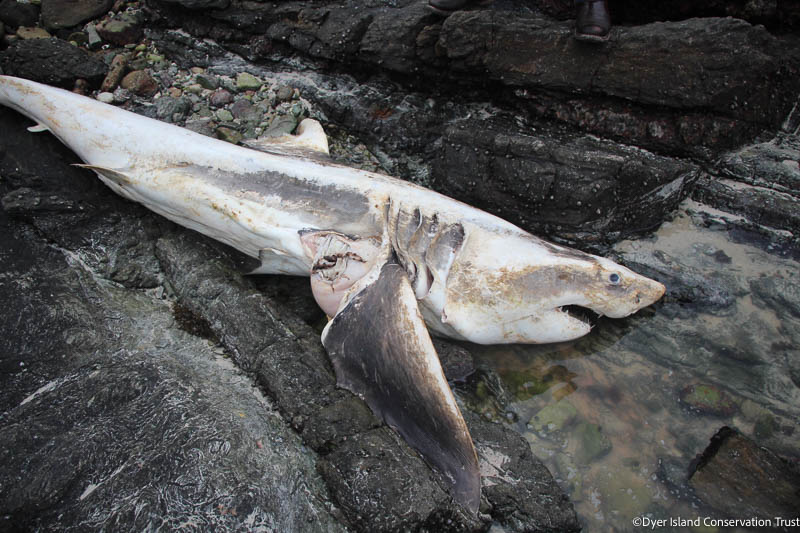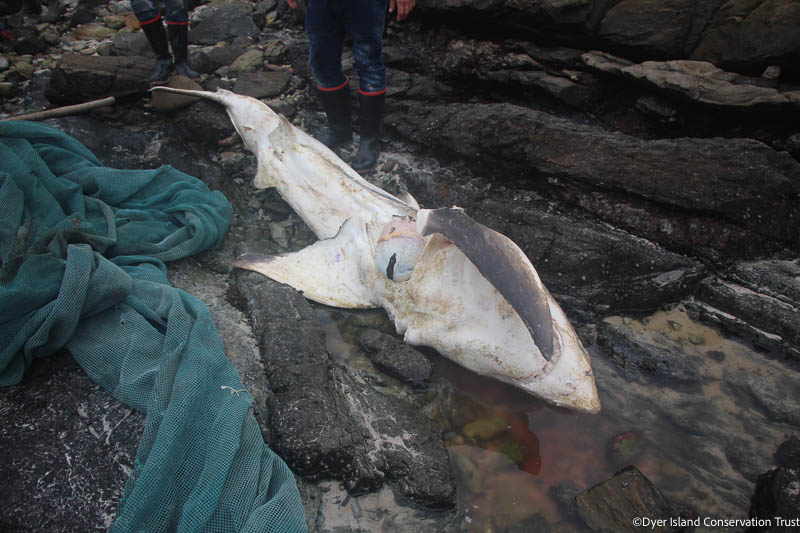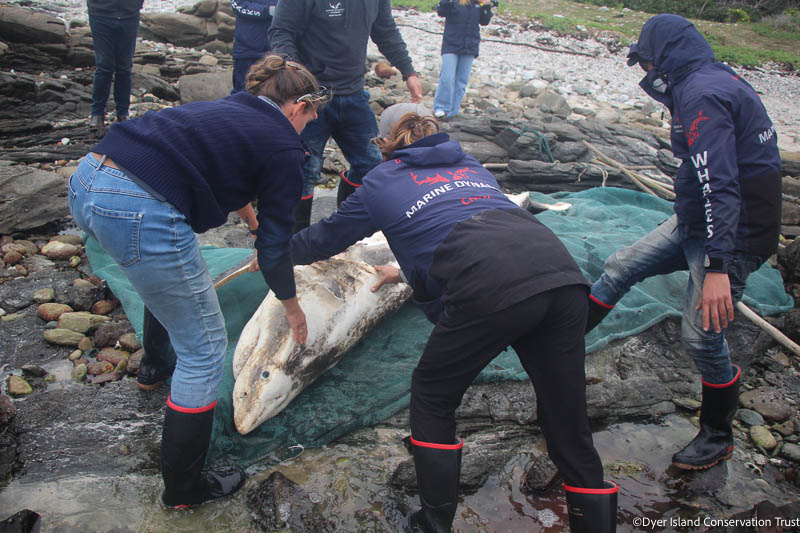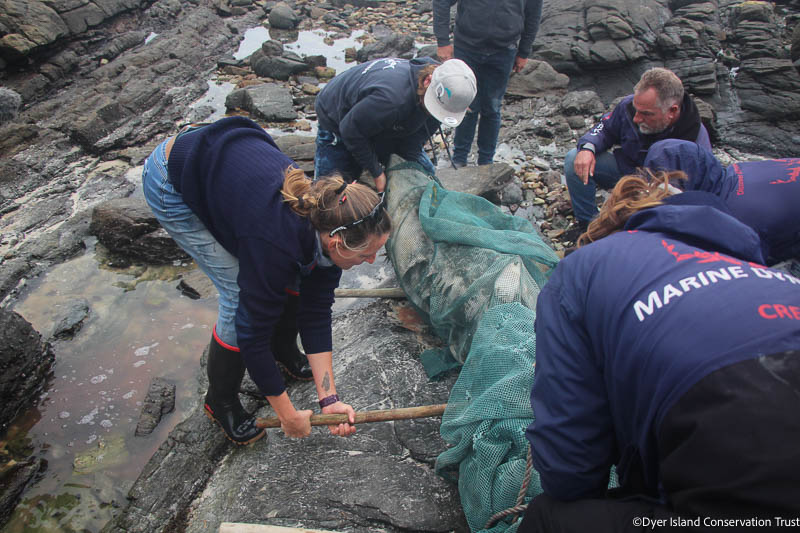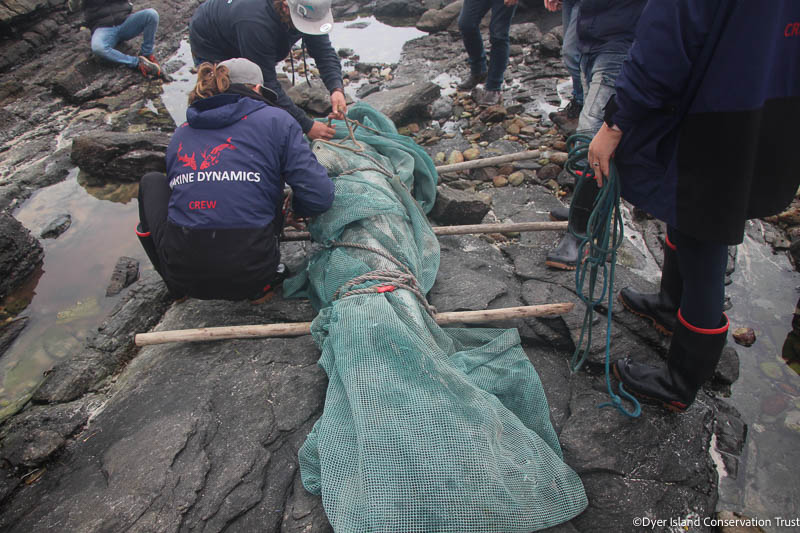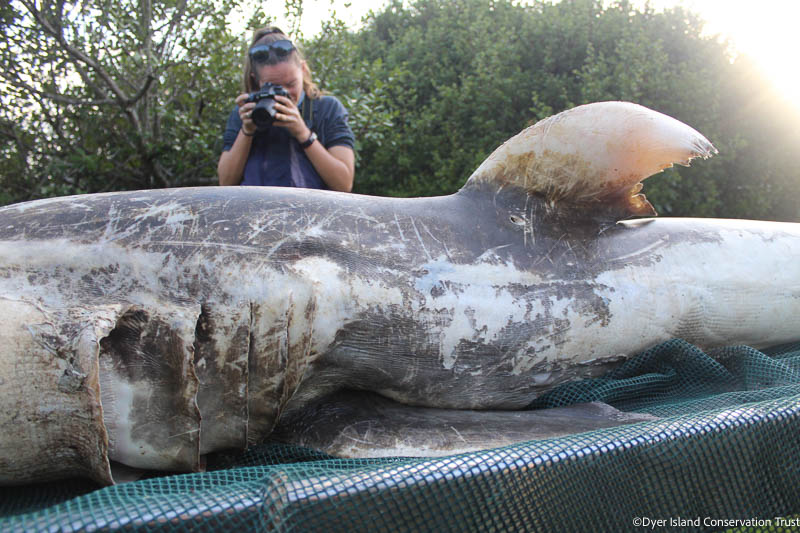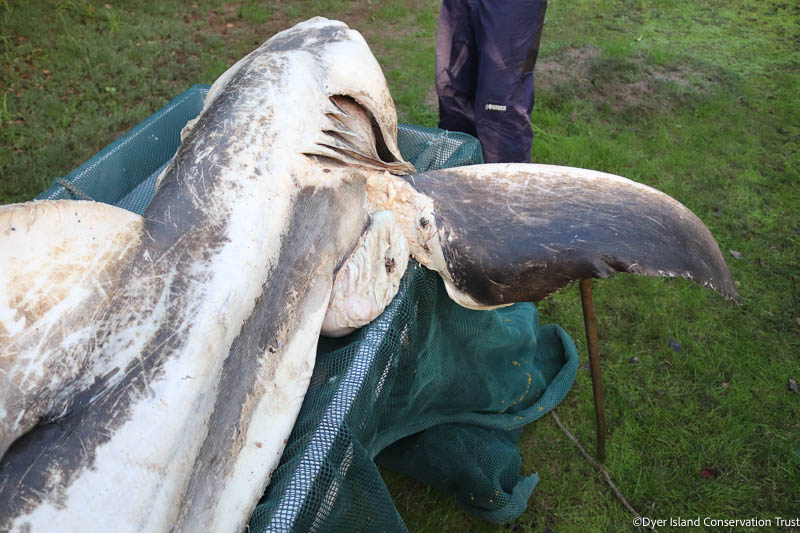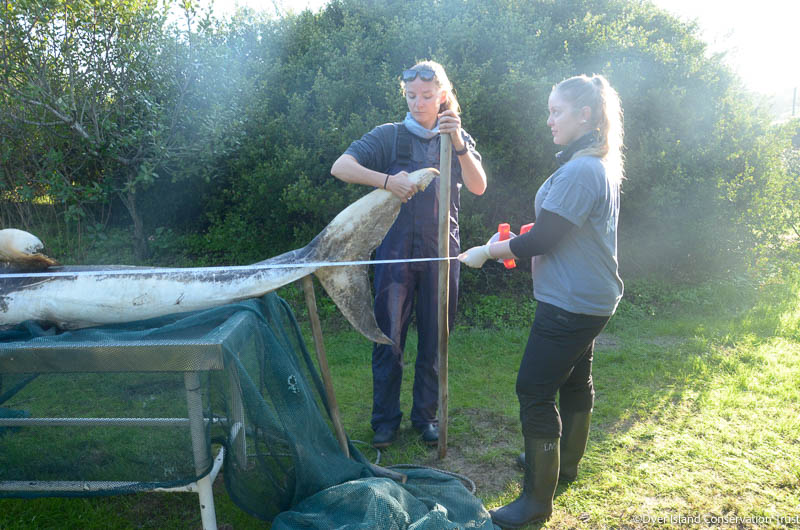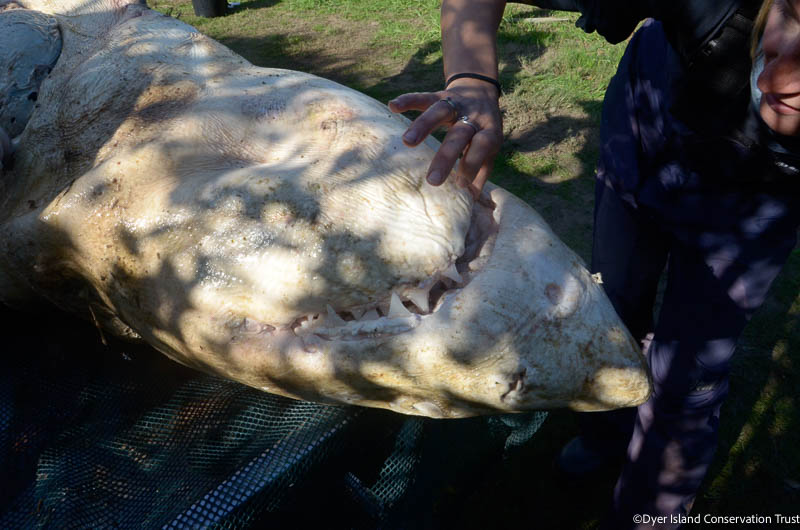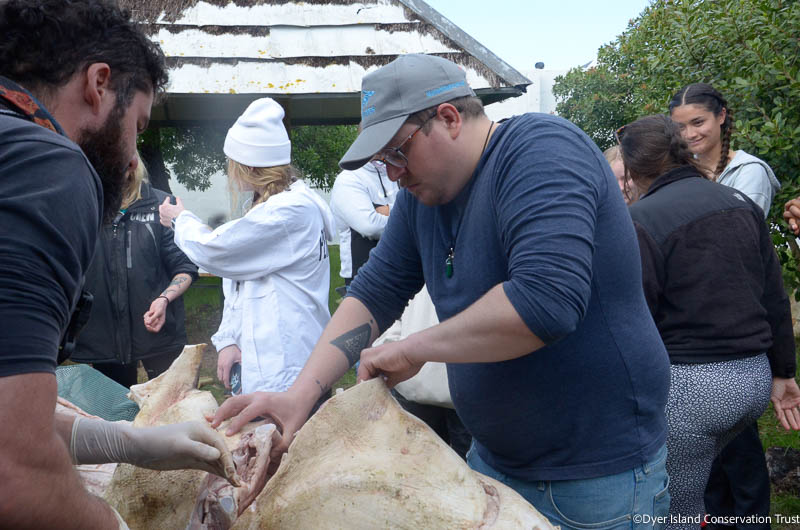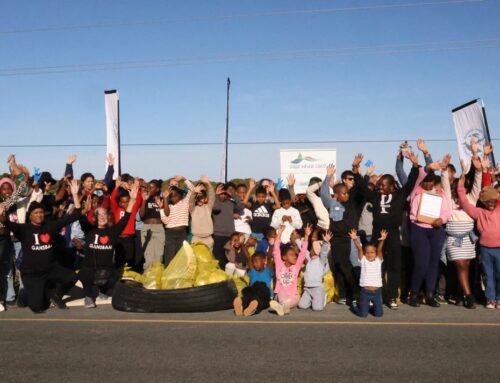Report by Alison Towner and Alina Pryazkhina.
At 4pm on Monday 20th of June, a stranded white shark, Carcharodon carcharias was reported in from Die Dam area of the Overberg, GPS°34 46.101’ S, 19° 40.599’ E. The animal was a deceased subadult female. It was retrieved by the Marine Dynamics Academy (MDA) team and rolled into a trawl net, then transported back to the International Marine Volunteers lodge in Kleinbaai on the 21st of June, to be necropsied by A.Towner and the MDA team the following day. On the morning of the 22nd of June, detailed photogrammetry and measurements were taken by Alina Pryazhkina and Ettienne Roets, together with volunteers from the MDA. A.Towner then lead the external examination and necropsy with assistance from the MDA team. Permission was obtained from DFFE before the necropsy took place under the designated research permit RES2022-49 Towner _Booth.
The white shark was a 2.94cm TL specimen, torn open at the pectoral girdle. The shark had what appeared to be killer whale tooth impressions visible on the caudal fin, and it had a Domier dart head from an old acoustic tag imbedded in the musculature at the left side of its dorsal fin base. A. Towner suspects this to be an animal they tagged in Mossel bay two years ago, but due to the degraded condition of the dorsal fin, and complete lack of tag or tether, it is not possible to verify. The flesh was removed and inspected containing the dart head and no signs of lesions, or muscle damage were evident, the wound had fully healed around the tag in a circular shape, walling it off and supporting the fact it was an older tag that had likely fallen off with time. Swabs for genetic material were taken above and below the pectoral tear injury and the possible raker marks on the caudal fin, as well as two control sites on the body and these were frozen. The shark was then turned onto its back, and its stomach protruded through the pectoral tear injury.
On cutting the ventral flesh open, the sharks liver and the heart were confirmed to be missing. The stomach contents contained one subadult Cape fur seal Arctocephalus pusillus weighing 8.65kg, it had likely been freshly consumed due to very little decomposition and had been bitten in two, at the hind flippers. It was complete and folded into the sharks stomach. No other contents were found in the sharks stomach, or spiral valve, except from three small pebbles and a similar sized sea urchin from the seals stomach. The sharks internal organs all looked relatively healthy, apart from one small fleshy lesion at the cloaca. Unidentified isopod parasites were present inside the shark, they were still alive, no copepods were visible. The isopods were sampled. Fin clips and muscle tissues were sampled, both frozen and in 96% ethanol as per all previous white shark necropsies. Data sheets were filled out with all external measurements, weights of organs and vertebrae counts as detailed in the methods of Towner et al. 2022. The sharks head was frozen with its jaw, as opposed to removing the jaw. The sharks fins, all samples and its head will collected by DFFE and the samples distributed to permitted white shark researchers for their ongoing project on genetics, diet etc.
The conclusion on this particular animals death was predation by Killer whales Orcinus orca, based on the time of year, the types of injuries and the fact that the known killer whale pair – proven to predate on large sharks in South Africa, were in the region two days before. This is the eight white shark, confirmed to have died due to Killer whale predation in South Africa, the real number is likely higher as not all carcasses will wash ashore.
